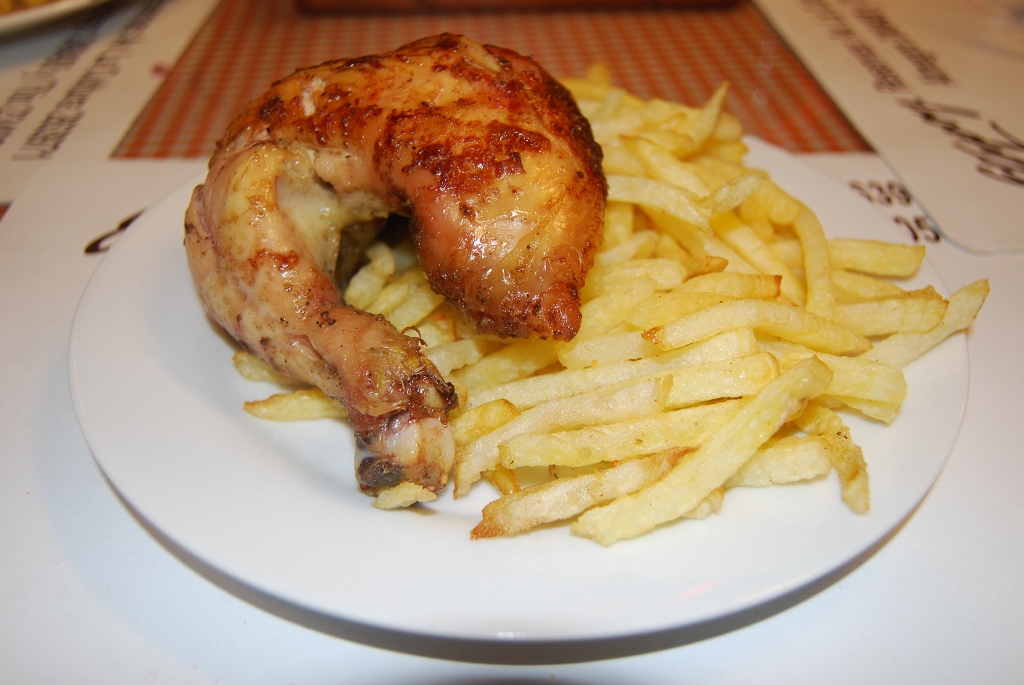Stuck in a Savory Gap

Have you ever tasted slowly, piece by piece, the crispy or well-cooked skin of an oven-baked chicken or a pollo a la brasa? How tasty. It makes your palate dance as if at a fiesta. It is a taste without equal. Even though the juicy chicken is also a delight, it is the je-ne-sais-quoi of the skin that makes the chicken so popular and makes you want to eat the skin no matter how many times you are told it isn’t good for you.
What is the name for that taste? I am perplexed. I can describe it but in Spanish I get stuck with the word sabroso, which in English is defined as delicious, savory, salty. Sabroso seems stuck, either in the general of delicious or the wrong precision of salty. To ask more is to enter into a trackless semantic wilderness.

Since I get to translate for this page between Spanish and English I realize that English has more options here even before I go into the jungle, I take the words savory and tangy and I look in the dictionaries to find their equivalents in Spanish, hoping there will be a way to say them in the language of Cervantes.
Tangy or savory in English refer to the taste of an aged parmesan cheese that is a bit biting but has breadth at the same time. The words simply open a world of flavor beyond salt, and I do not find equivalents in Spanish. The dictionaries just send me back to sabroso.
Recently, the world of cooking was taken by a word from Japonese that refers to the flavor of tangy or savory that is so difficult to speak in Spanish. It is umami and this word is also used now in Spanish, although mostly among foodies. If you look it up in the Spanish dictionaries they remit you, once again to the impossible wilderness of sabroso.

However, if you go to the encyclopedias they will tell you the word describes an additional category of taste, beyond the classic four of sweet, sour, bitter, and salty. This at least confirms that in Spanish the indescribable exists, and not just in English. It also indicates we are not crazy for asking to find a way to pair the two languages, even if Japonese is the means.
They go on to say that umami is most classically known in monosodium glutamate which was marketed in Japan, and Peru, under the name of ajinomoto. It is so popular in Peru that it is found in most family kitchens either as ajinomoto or in one of the popular name-brand seasonings. This ingredient is part of what makes so much Peruvian cuisine brilliant even if in Spanish there is no precise word or words to describe its taste.
Nevertheless, it is not monosodium glutamate alone that imparts this flavor. It is found in many foods, such as in the crunchy crust of a French bread right out of the oven.
Now we know there are five great flavors and not just four, but the word umami in Spanish still strikes me as a concept that is yet to fully make itself part of the language. It sounds and feels foreign, or professional. There is not yet a word, like fried rice (arroz chaufa)—which also has umami, that has made itself such an important part of Peruvian cuisine.
And here I am, perplexed and frustrated. I move between languages. Each has its genius, but they do not say the same things even when we have to produce “translations.”




